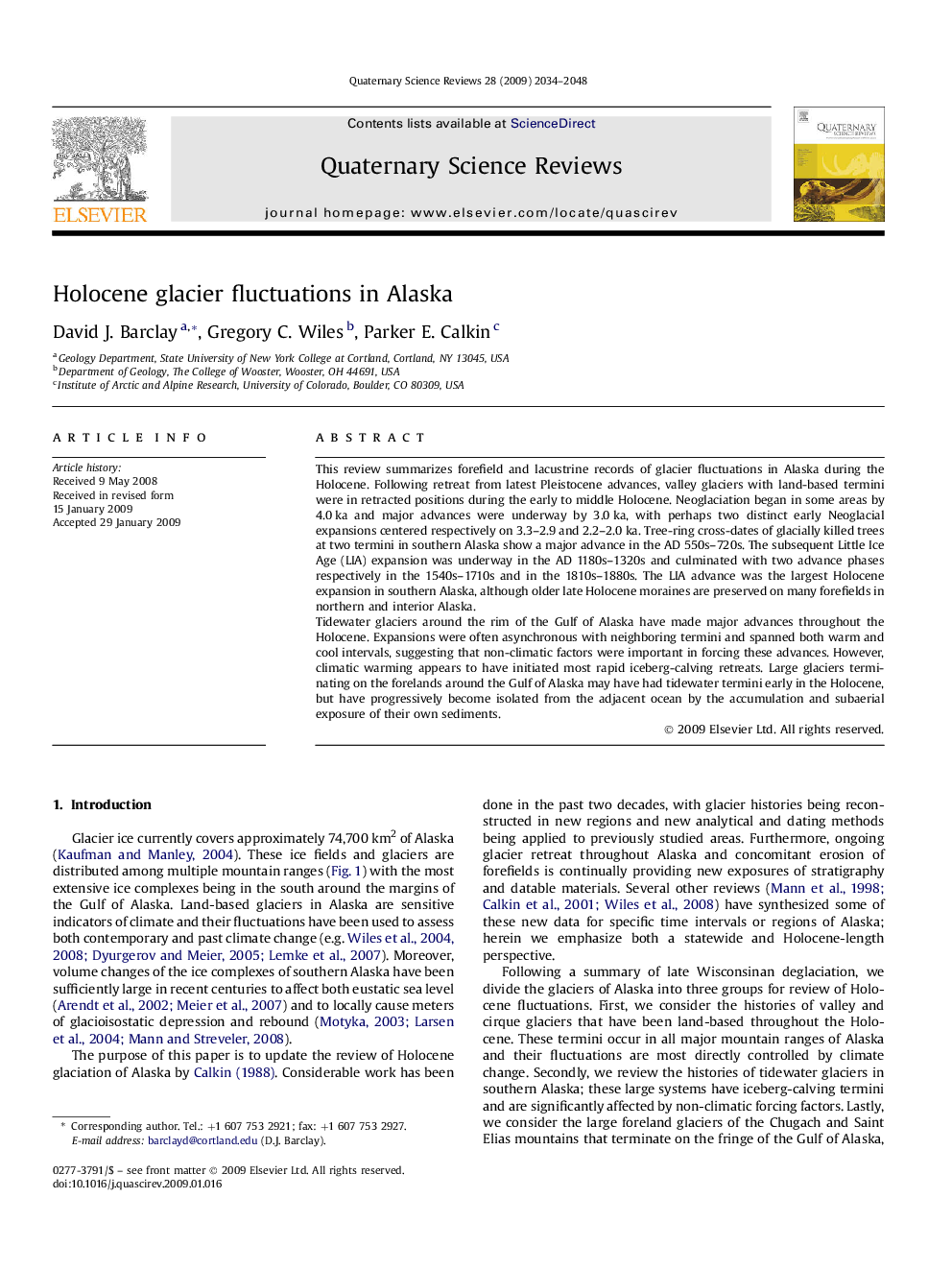| کد مقاله | کد نشریه | سال انتشار | مقاله انگلیسی | نسخه تمام متن |
|---|---|---|---|---|
| 4737945 | 1640935 | 2009 | 15 صفحه PDF | دانلود رایگان |

This review summarizes forefield and lacustrine records of glacier fluctuations in Alaska during the Holocene. Following retreat from latest Pleistocene advances, valley glaciers with land-based termini were in retracted positions during the early to middle Holocene. Neoglaciation began in some areas by 4.0 ka and major advances were underway by 3.0 ka, with perhaps two distinct early Neoglacial expansions centered respectively on 3.3–2.9 and 2.2–2.0 ka. Tree-ring cross-dates of glacially killed trees at two termini in southern Alaska show a major advance in the AD 550s–720s. The subsequent Little Ice Age (LIA) expansion was underway in the AD 1180s–1320s and culminated with two advance phases respectively in the 1540s–1710s and in the 1810s–1880s. The LIA advance was the largest Holocene expansion in southern Alaska, although older late Holocene moraines are preserved on many forefields in northern and interior Alaska.Tidewater glaciers around the rim of the Gulf of Alaska have made major advances throughout the Holocene. Expansions were often asynchronous with neighboring termini and spanned both warm and cool intervals, suggesting that non-climatic factors were important in forcing these advances. However, climatic warming appears to have initiated most rapid iceberg-calving retreats. Large glaciers terminating on the forelands around the Gulf of Alaska may have had tidewater termini early in the Holocene, but have progressively become isolated from the adjacent ocean by the accumulation and subaerial exposure of their own sediments.
Journal: Quaternary Science Reviews - Volume 28, Issues 21–22, October 2009, Pages 2034–2048